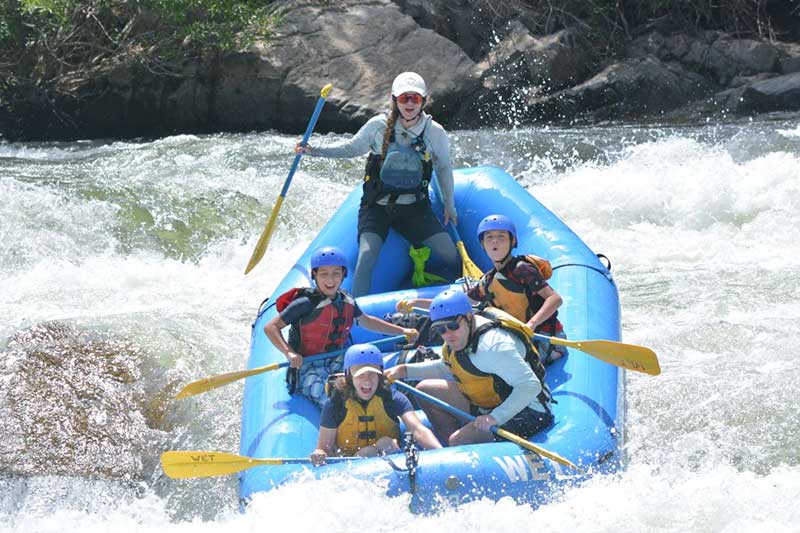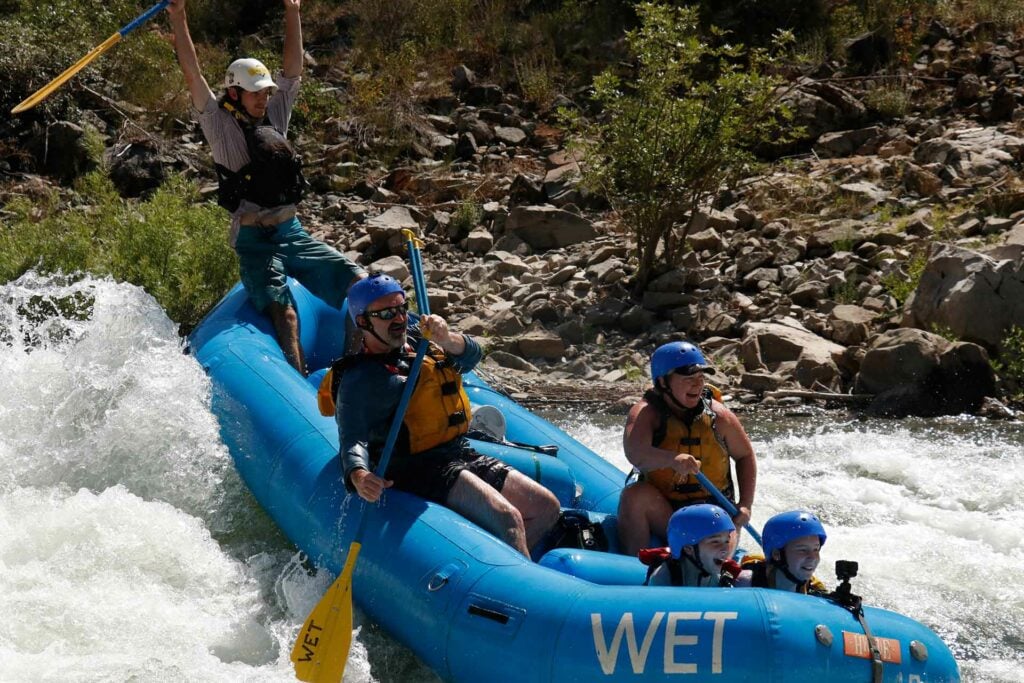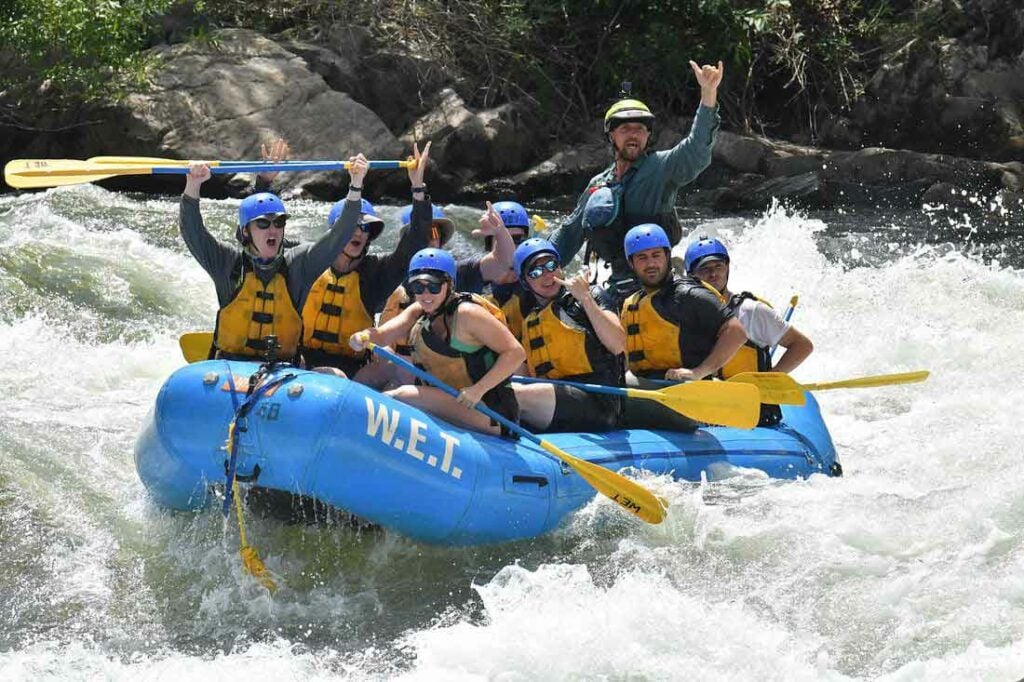+1 888 723 8938
Call or Text!
Get Your Photos!
Visit our photo partners
Menu
Close
Book Now
Book Now
Call or Text!
Visit our photo partners




Super professional, expert guiding! Super friendly and attentive guides and driver. WET is a smaller company so you have more individualized attention and don’t travel

This is the second time that my group of Scouts (ages 12/13/14) has done a whitewater rafting trip with WET and I’m every bit as

BEST first-time rafting experience ever. We decided to do the Middlefork and it was amazing because of the guides at WET. They are knowledgeable, friendly,

We are El Dordado County locals who have done a lot of whitewater rafting over the years, both locally and elsewhere in the US. We

WET made our trip PERFECT! I can’t pick one favorite part of the trip. The guides were amazing. The planning and execution of the trip

Amazing experience. Fun-filled day Amazing experience. We had three trips in the past with different companies. Hands down the best experience with these guys. Will
EXCELLENTTrustindex verifies that the original source of the review is Google. I attended a WET 2-day Middle and South Fork rafting trip with some friends a few weeks back and it AWESOME! Our guides Ant, Drew, and Walker were super friendly and fun, and very knowledgeable about the river and its history. It really helped ease my nerves knowing that our guides were so well versed. White water rafting was both a nerve racking and thrilling experience! I would absolutely recommend taking a trip with the WET crew! This trip really convinced me to be more open to outdoorsy experiences like this! Thanks so much for such an incredible weekend!! :)Trustindex verifies that the original source of the review is Google. Excellent Experience! Earlier this summer I went on a "Chili Bar" trip with a Big group. The hospitality of the WET crew was great from beginning to end! We had boats of all abilities and the guides definitely catered to each group, especially the boat of teenage boys. The trip was great, but if I'm honest, that top half of the river left me wanting more. Later in the summer I had the opportunity to take a group out again and the "Gorge" was exactly what we needed! Thank you WET! We will be back next year, maybe even for the Middle Fork!Trustindex verifies that the original source of the review is Google. My friends and I had an absolute BLAST with WET on our white water rafting trip. We got so incredibly lucky with the absolute best guides: Ant, Drew, and Walker. They were the perfect mix of fun and stern and lead us to greatness all down the river! They ensured our safety and kept us laughing through all the rapids. The campsite and provided meals were also excellent. They took such good care of us!!! It was literally an awesome experience. If we were to go again, we would only choose WET! Thanks so much for such a memorable weekend!Trustindex verifies that the original source of the review is Google. Had an awesome two day trip for a 30th birthday, 14 people with Ant, Drew, Walker as guides, shout out to Noel and will for driving too (and driving our diabetic friend back to the car early). Very well organized and a ton of fun.Trustindex verifies that the original source of the review is Google. Had so much fun rafting with guide Hayley! Will definitely be back :)Trustindex verifies that the original source of the review is Google. We did the two day rafting trip with the more mellow rapids on Day One and Class 4 rapids on Day Two. Our guide Hailey was very professional and did an excellent job of teaching us how to work together to navigate the rapids. We had a lot of opportunities to get in the water and cool off and Hailey was good about helping us conserve energy so we weren’t too exhausted by the end of Day Two. Having the meals included was a huge plus. Not only were they delicious but it meant that we could just sit back and relax! We also did the GoPro and it was a lot of fun to watch later on. Highly recommend! I look forward to going again next year!!Trustindex verifies that the original source of the review is Google. Guides were super friendly and fun to talk with. Everything on our end felt relaxed even though I’m sure the guides had logistics to be aware of. Campground hosts for WET were also superb and were able to accommodate a last minute request for grill support.Trustindex verifies that the original source of the review is Google. Awesome experience! Fantastic guides! Looking forward to doing it again next season.Trustindex verifies that the original source of the review is Google. So fun my cousin and I started planning our next rafting trip as soon as we got back to the car :D Guides Stu (Stew?), Jo, and Walker are all very friendly and fun! And the Australian fellow, I think his name is Matthew?, in addition to being friendly and fun is also quite heroic and may be part mountain goat XD Thank you to these wonderful guides for facilitating the fun and keeping us safe! (On the Middle Fork: watching them raft down the big waterfall is wild! They are so pro!! Very impressive.) If you’re on the fence about rafting, DO IIIIT!! Everyone we bullied into coming with us had a blast. You will too ;)Trustindex verifies that the original source of the review is Google. 10/10 experience - was super fun and a great time. Walker was an awesome guide and made the trip!Verified by TrustindexTrustindex verified badge is the Universal Symbol of Trust. Only the greatest companies can get the verified badge who has a review score above 4.5, based on customer reviews over the past 12 months. Read more
One of California’s original rafting companies, WET River Trips has been providing exceptional, personalized half day to 5-day rafting adventures for over 40 years on the American, Yuba, Kaweah, and Klamath Rivers.
Our guides are the best in the business. Their knowledge, safety-first mindset, and infectious enthusiasm will keep you safe and entertained throughout your adventure. Leave it to us to ensure your rafting trip is exhilarating and unforgettable. As “Professionals at Fun,” you’re in the best hands on the river with WET.

South Fork Trips Meet at: 5461 Bassi Rd, Lotus, CA 95651
Water flows in the South Fork American River result from releases from hydroelectric facilities located upstream. Such water releases are not subject to the control of El Dorado County or rafting companies operating under Permits from the County of El Dorado.
Transportation for trips operated under California Public Utility Commission TCP# 0038955